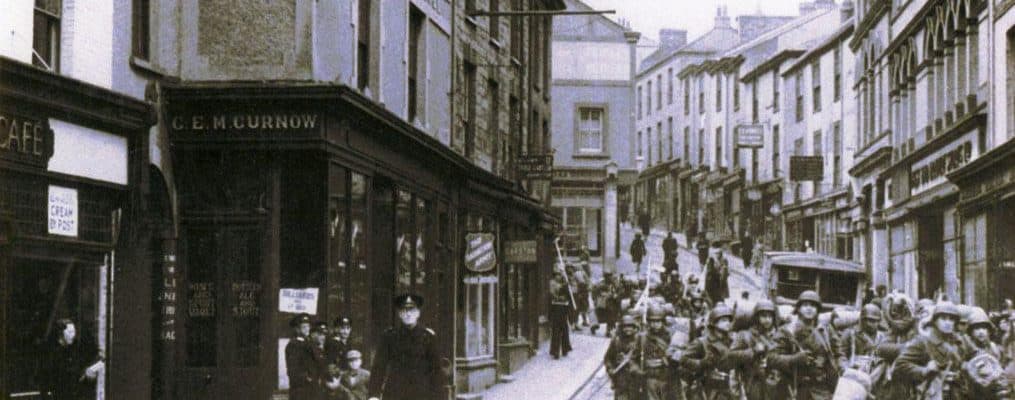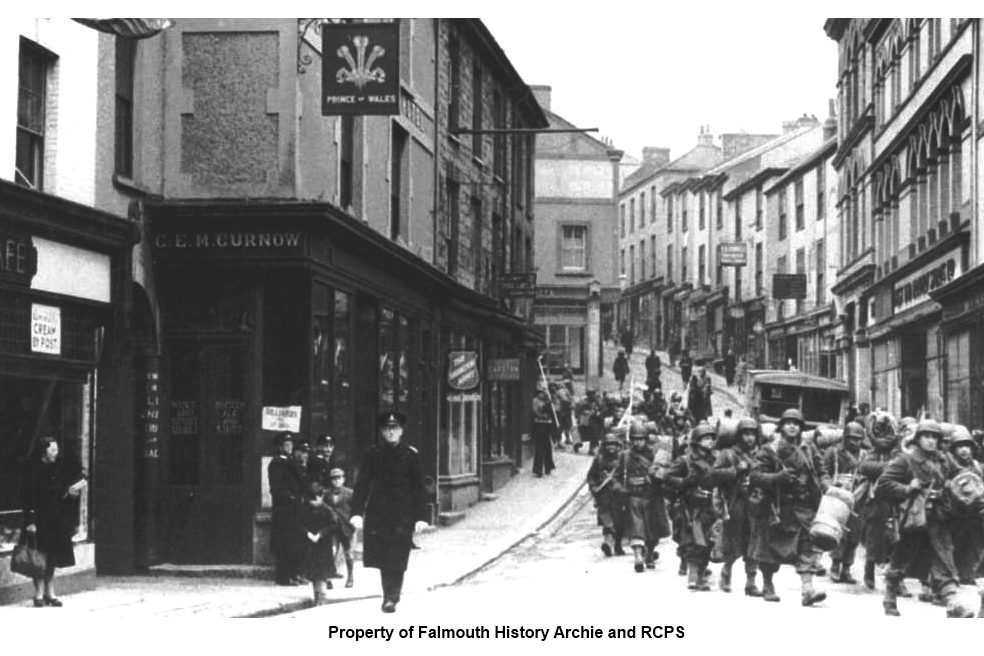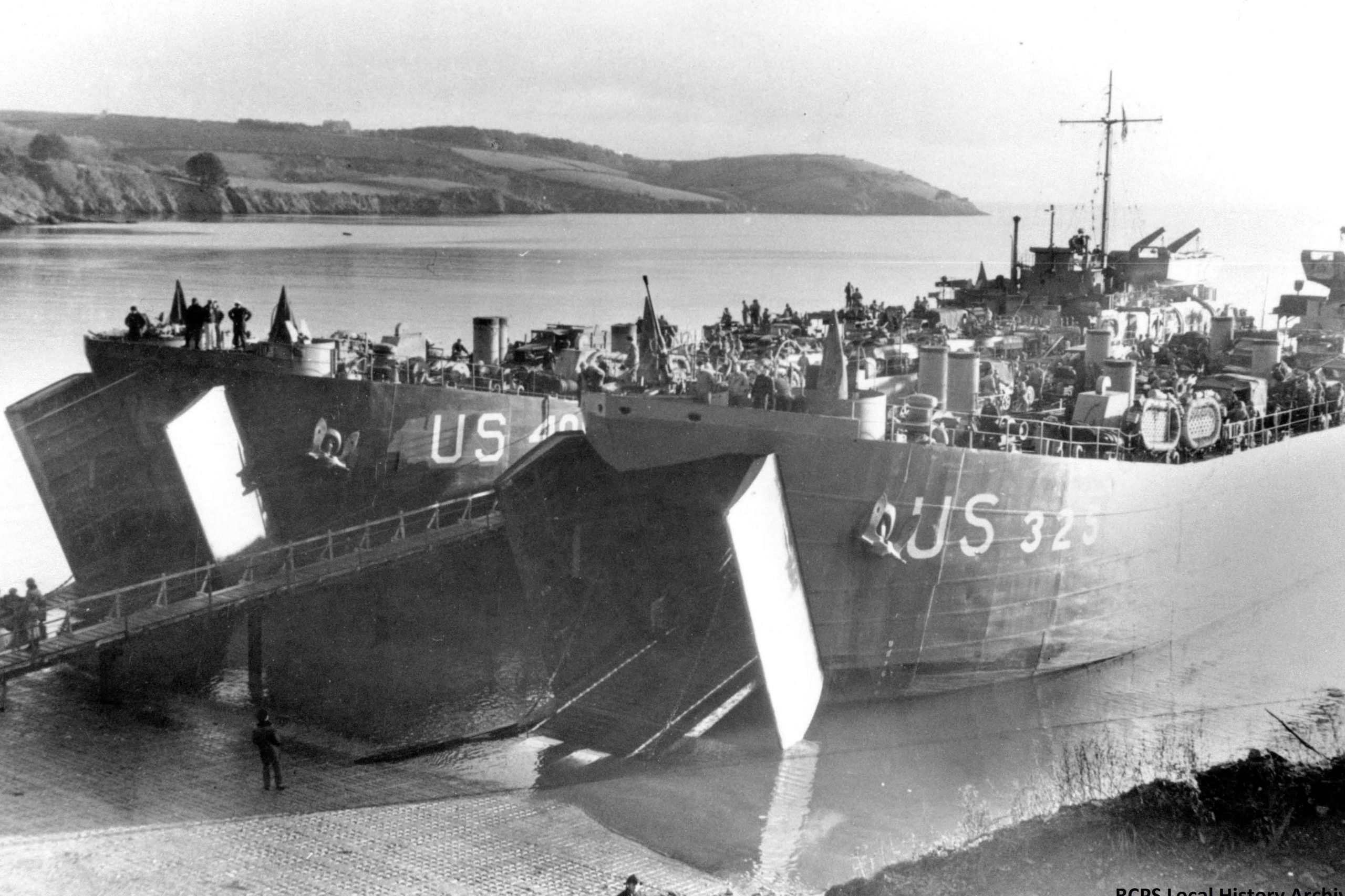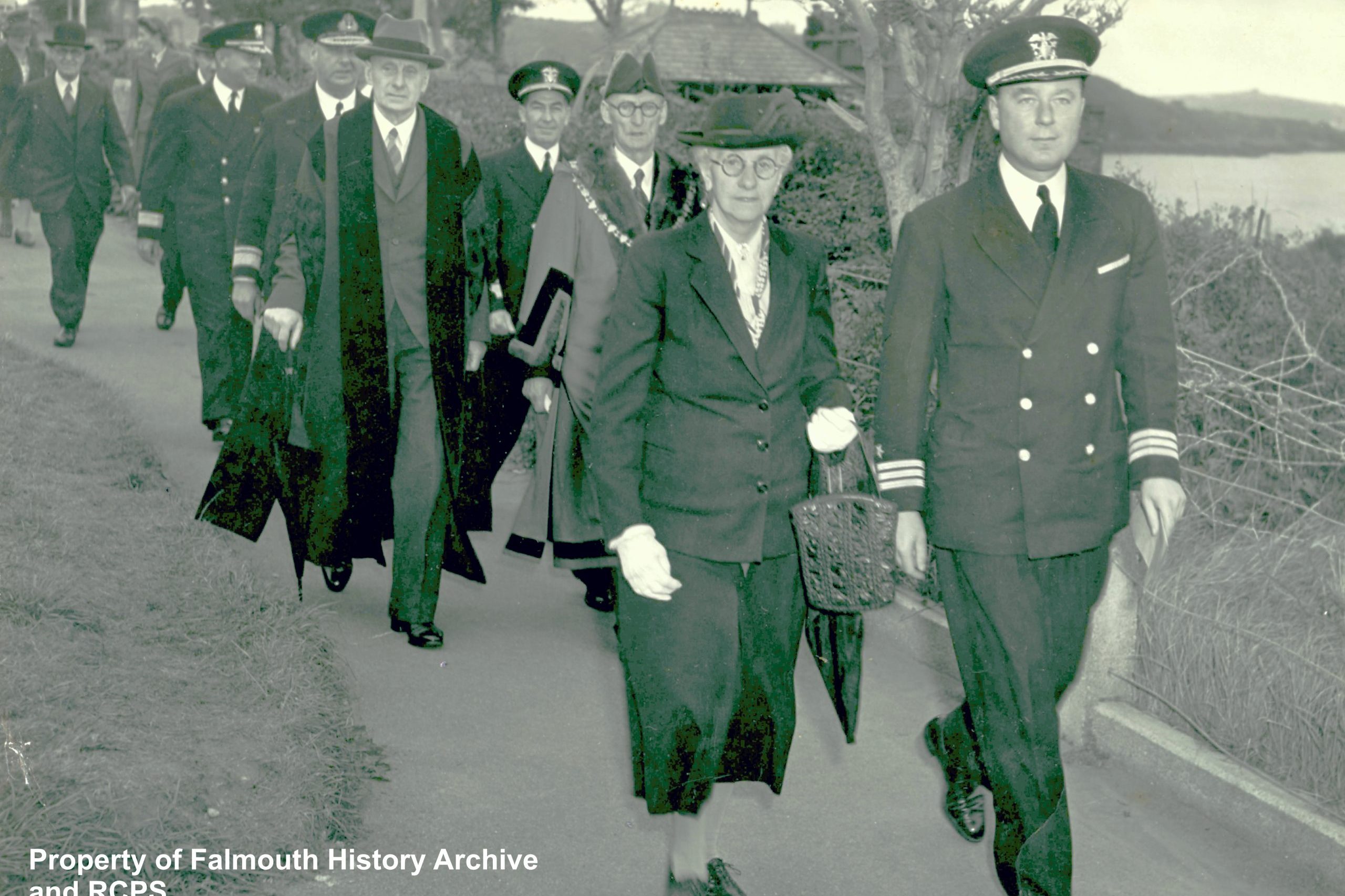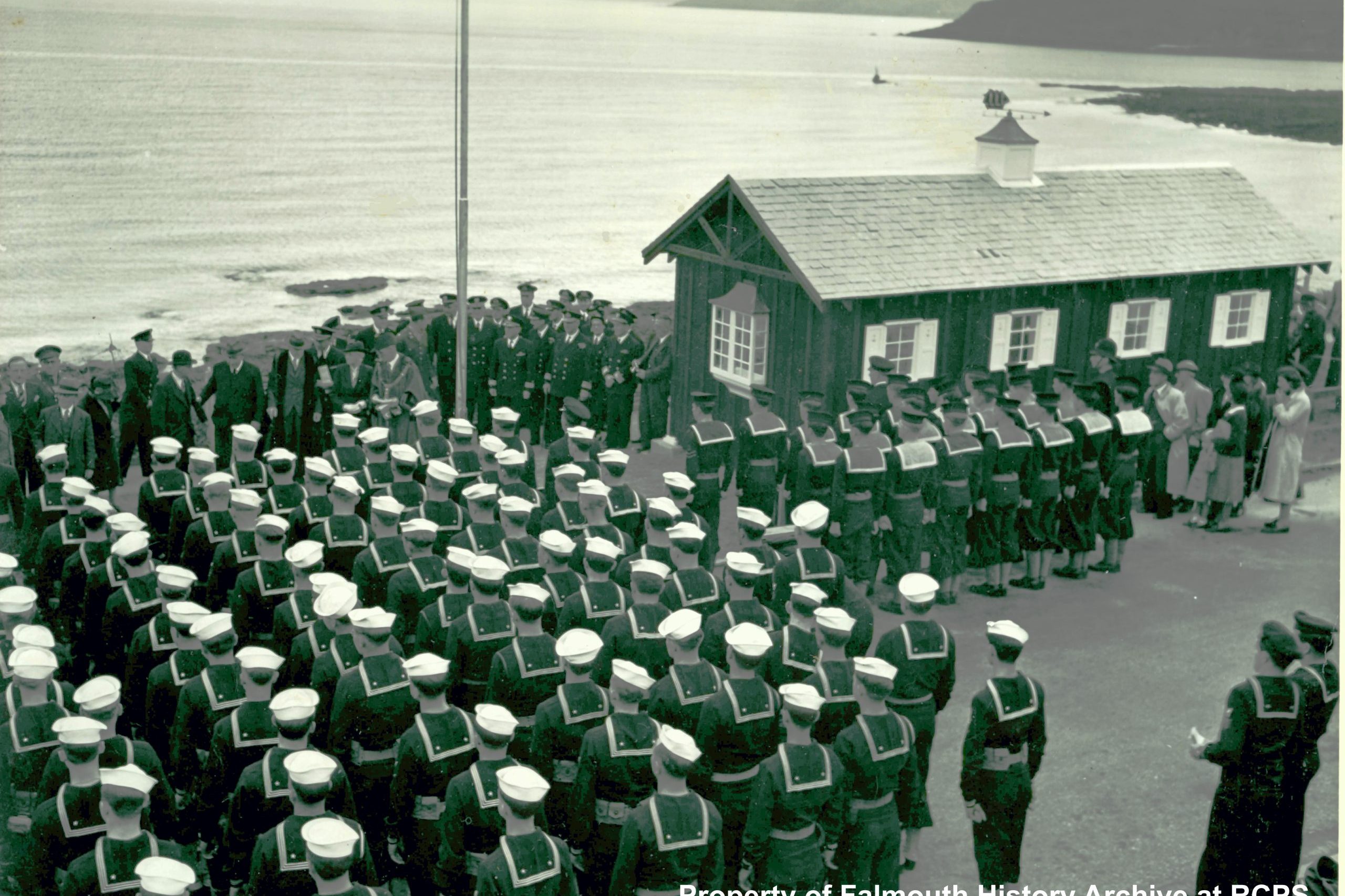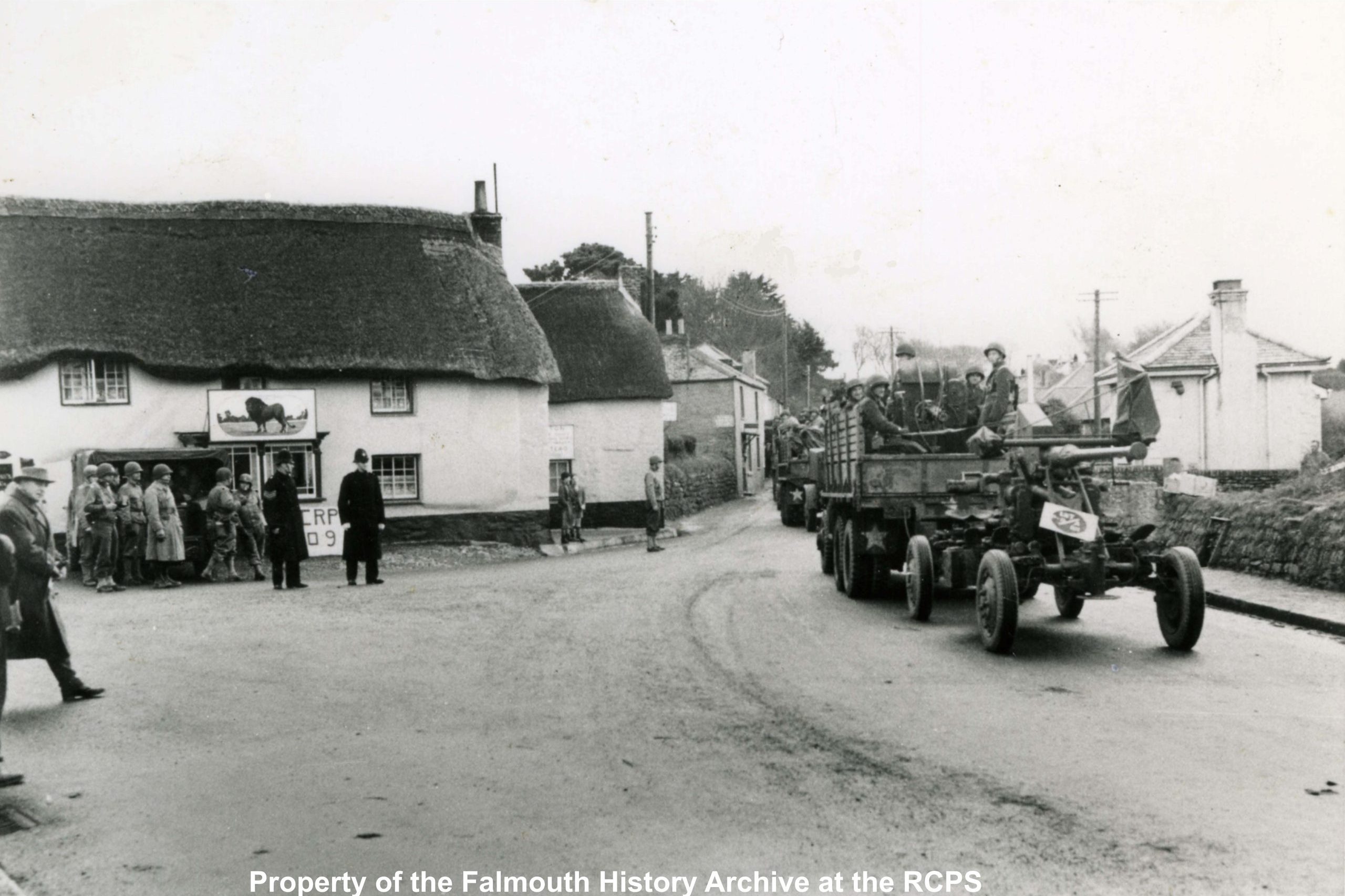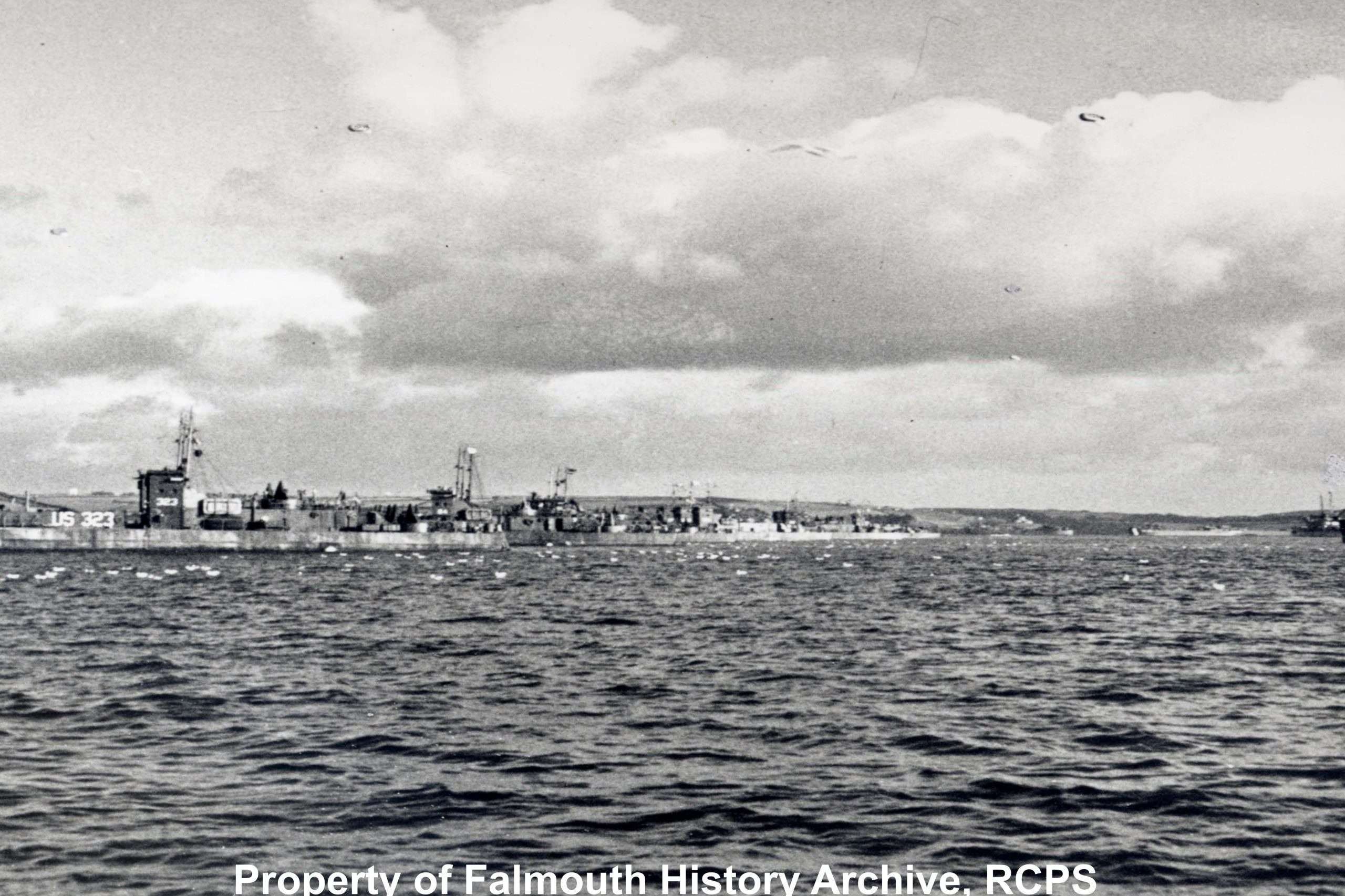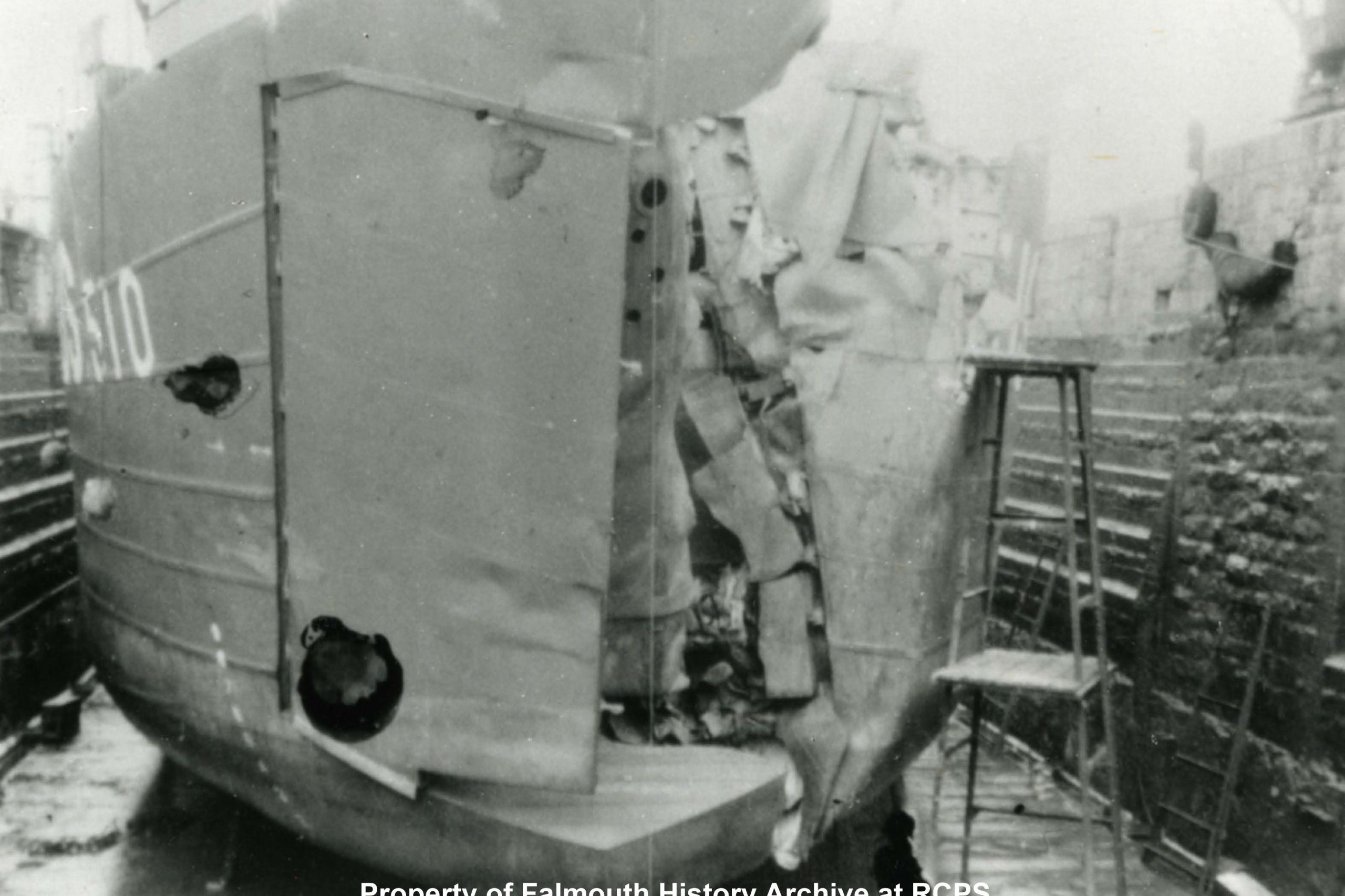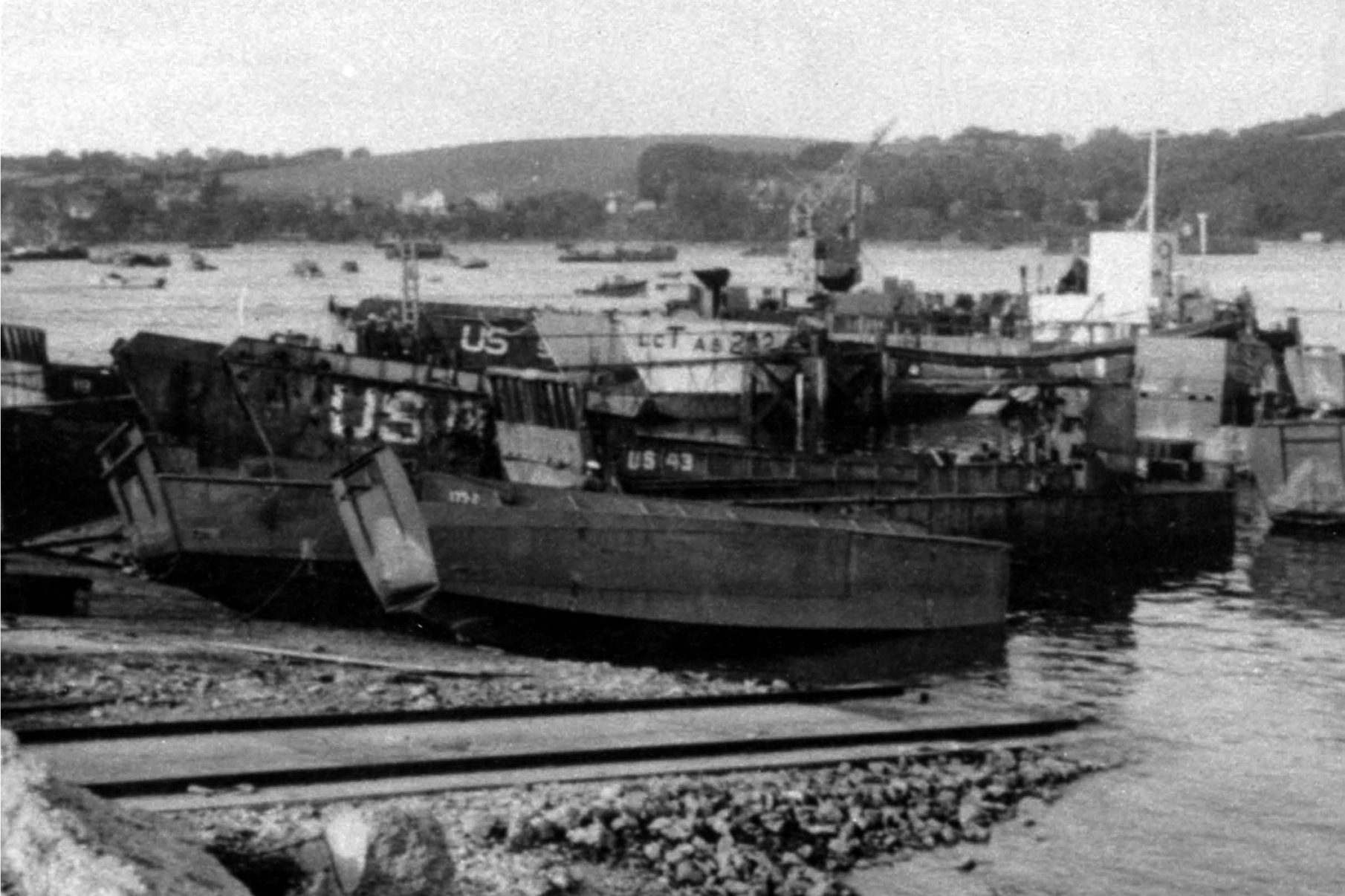D-Day Landings
Falmouth played a key part in the D-Day landings in Normandy during World War II. Here are some incredible facts and stories:
- Throughout 1943 and part of 1944, thousands Americans arrived in the Fal Estuary in preparation for the landings and set-up embarkation points in various areas around Falmouth. General Eisenhower stayed at Tolverne Cottage, also known as Smugglers Cottage, while the 27,000 American troops gathered in and around the Fal Estuary.
- The Beacon area in Falmouth saw a makeshift army camp erected where the troops readied themselves to embark to Omaha Beach in Normandy. The Americans were based there for practice, with many of their manoeuvres taking place in the River Fal and local beaches.
- A slipway was also built at Grove Place for landing craft to be loaded with troops and heavy transport. Some of the other notable locations sited around Falmouth include Tolverne, Turnaware Bar and the beach at Trebah Gardens on the Helford estuary.
- You can find commemoration plaques throughout Falmouth at Turnaware Bar, Falmouth Watersports Centre, Tolverne and Trebah Garden.
- The Americans established a Naval Advanced Amphibious Base at falmouth and the men of the 29th Division arrived in Cornwall in May 1943. The Division had four artillery battalions, an Engineer and a Medical Battalion. In all about 790 officers and 13,500 enlisted men with 120 big guns and nearly 1500 vehicles. In fact there were so many American service personnel, Cornwall and Devon at the time, quickly became known as the ’49th State of the Union!’
- As training intensified, access roads and piers were built, and five special slipways were built of concrete at Harvey’s Yard and Taylor’s Garage (the area in Falmouth around what is now Trago Mills), at Tolverne near King Harry Ferry, at Turnaware Bar opposite Trelissick House and at Trebah Garden on the Helford River.
- The whole Falmouth area was a centre for cloak and dagger activity. As well as the Special Operations Executive (SOE) based at Helford, the Free French operated out of Mylor, while the Secret Intelligence Service (SIS) had its local HQ in Falmouth. All used French fishing boats as cover for their clandestine missions.
- Embarkation for D-Day took place between 31st May and 3rd June 1944. The 175th Division loaded in Falmouth – at Tolverne, Turnaware, Trebah and Falmouth Docks.
Some more interesting facts, figures and quotes:
- 30 enemy aircraft approached Falmouth in the early hours of bank Holiday Monday May 1944, the week before D-Day. The leading planes dropped red and green flares to mark the bomb path, before the bombers then swept in across the Carrick Roads, the Docks and along the seafront to Swanpool. An underground fuel tank at Swanpool was hit, sending burning petrol down the hillside towards the village. 500 American soldiers and sailors awaiting embarkation joined around 200 firefighters to tackle the blaze.
- Falmouth Bay filled with boats large and small. The Falmouth Packet of 21st June 1944, reported that thousands of troops had arrived, ‘packed like herrings’ on the decks, and described how people ’emptied their larders’ and bakers provided over 10,000 loaves and 5,500 pasties for the exhausted evacuees.
- Falmouth Docks were an obvious target for enemy aircraft – the first bombs fell on 4th July, and more raids quickly followed. Air defence became a top priority. Barrage balloons floated high above the docks, dummy rail installations were built outside town to fool German bomber pilots, new air stations appeared across the county and radar stations sprang up on the Lizard Peninsula.
- The whole country’s moral was lifted by an extraordinarily heroic mission – Operation Chariot, which was launched from Falmouth. This was the special forces raid aboard HMS Campbeltown, on the docks at St Nazaire in France. Read more about this incredible story via the link. A memorial plaque to commemorate the bravery of the people involved can be viewed at Prince of Wales Pier in Falmouth.
“During the war we couldn’t go out on the seafront because of the defences, so we used to go swimming down at the Greenbank – off the Greenbank Quay – we were known locally as the water rats because we used to go swimming from April up till October virtually every evening and weekend because there was nothing else to do. You’d go to the cinema on Saturday morning for sixpence if you was lucky, and that was it”
“I know there was a lot of activity down Bar Road, Falmouth and a lot of naval people going to and fro there, and I met up with 2 boys….whose father had escaped from Guernsey. I didn’t know what he was doing at the time, but he knew all the waters of the Channel Islands, so I assume now that he was useful in landing agents on the coast of France.”
“I used to love going to Falmouth because the harbour there was full of naval craft and the American tank and infantry landing craft were almost across the whole harbour, it was a magnificent sight. Even in those days you could hire a rowing boat and row amongst the craft without any questions being asked, Security was non existent.”
“My father got tied uo in the end, building the tank road at Mawnan as well as at Trebah. The Americans used concrete rather than our tarmac. It’s still there today – Mawnan to Trebah Garden – straightening out all the bends. Everything the Yanks did was double quick time; by the time we decide, they had usually done it!”
(Credit source: Derek Carter, Martin Mason/Falmouth Operation D-Day at 60)
Browse the fascinating image and video gallery:
(Image credits: The Poly/Falmouth History Archive and video credit: Critical Past)



